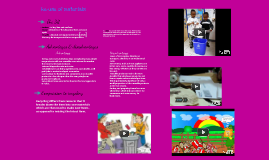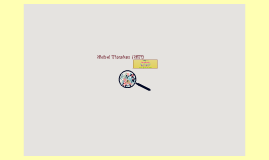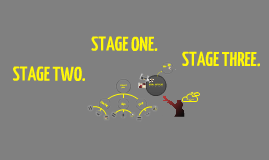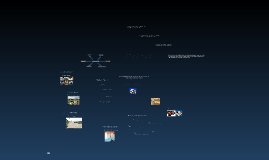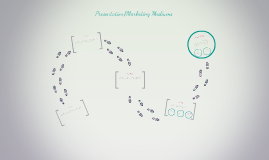Materials Presentation
Transcript: Nickel Titanium (NiTi) Rockwell Results (NiTi) MAG=200.00 K X - Refine with friction, removing saw marks and cleaning the specimen surface. - There’s two type of grinding machines that we use for this specimen the - Role Grinder - Optipol-2 Grinding Machine - Purpose for this step is to obtain a flat surface free from all previous tool marks and cold working due to specimen cutting 100 x 100 MAG=100.00 K X NiTi: its composition, properties, and uses 320 Role Grinder Machine The alloy was named Nitinol, an acronym for the elements from which the material was composed; "Ni "for Nickel, "Ti" for Titanium and "nol" from the Naval Ordnance Laboratory Alloy of nickel and titanium. The two elements are present in roughly equal atomic percentages. It has the ability to return to a predetermined shape when heated. Hardness: Rockwell Scale NiTi 120 10 x 10 AFM setup (picture obtained from Wikipedia.com) AFM creates a Topographic 3-D image In a non contact AFM, the probe tip (cantilever) scans the surface without ever making contact with the specimen. Because the probe can not make contact with the specimen, and is moving in the x-y direction, deflection from a laser is used so the probe moves in the z direction to avoid collision while scanning During the scan, the probe is oscillating at a frequency slightly above it resonance frequency where amplitude of oscillation is typically a few nanometers (Van der Waals forces are strongest from 1-10nm above surface). SEM opened sample chamber the bar was one foot long 20 samples were cut into 5mm thick the samples were cut by a professional using a very precise and sharp blade. The last letter of the Rockwell scale, “HRA” specifies the load/indenter in use Every scale has either a different load/indenter or both As finish with the 120 staer machinege is time to move to the Buehler grind Begin by turning on the water, this flushes impurities in order to have a better grinding of the sample Now start with the 240 grit SEM is a type of electron microscope that produces images of a sample by scanning it with a focused beam of electrons. The electrons interact with electrons in the sample, producing various signals that can be detected and that contain information about the sample's surface topography and composition. The electron beam is generally scanned in a raster scan pattern, and the beam's position is combined with the detected signal to produce an image. SEM can achieve resolution better than 1 nanometer. Grinding: Properties Cutting: Uses Starting with the 120 grit belt, carefully place the sample face onto the exposed area of the belt being careful not to touch the rotating surface. Now apply moderate pressure, move the sample left and right across the rough surface to obtain an even grinding. To confirm the 120 grit stage is complete, all the saw marks should be replaced by parallel lines. If any line is not in the same direction as the other ones, continue grinding until all of the lines are parallel. Scanning Electron Microscopy: SEM analyzes the surface of materials. It measures and evaluates surface pitting, failure analysis, characterization of dust, deposits, contaminants, particles, filter residues, and other applications. SEM testing provide elemental analysis of solid samples, impurities, and the identification of physical and chemical defects. Three dimensional surface profile (3-D) True-Atomic resolution in ultra-high vacuum(UHV) Finishing Atomic Force Microscope Micro Cleaning Slower test time for same resolution (Requires a lot of time for accurate image) Images may become inaccurate due to creep and liquid present on the surface 240 Rockwell scale determines hardness by measuring the depth of penetration under a set load The higher the Rockwell hardness value, the harder the material Benefits of Rockwell scale is speed, reliability, and small areas of indentation Scanning Electron Microscope 10 x 10 Disadvantages over SEM Group #2 Ana Guajardo Joel Montemayor Nayely Parra Christopher Salinas An electronic producer that transfers high-energy and frequency vibrations to a container filled with liquid, used to remove particulate matter When the specimen doesn’t have any scratch is time to move to the 600 grit Follow the same steps Move specimen in one direction Rotate 90 degrees every 30 strokes This final step is for the specimen to get a good polishing Advantages over SEM Steps Atomic Force Microscopy: For the 400 grit is the same steps as the one above However need to repeat this grit twice in order for the specimen to be free from scratches This is the result of the grit not being rough as the 240 and 320 100 x 100 In the early 1960s, a nickel–titanium alloy was developed by W. F. Buehler, a metallurgist investigating nonmagnetic, salt resisting, waterproof alloys for the space program at the Naval Ordnance Laboratory in Silver Springs, Maryland, USA This alloy is used in aircraft, piping, automotive, telecommunication, robotics, medicine and dentistry.






